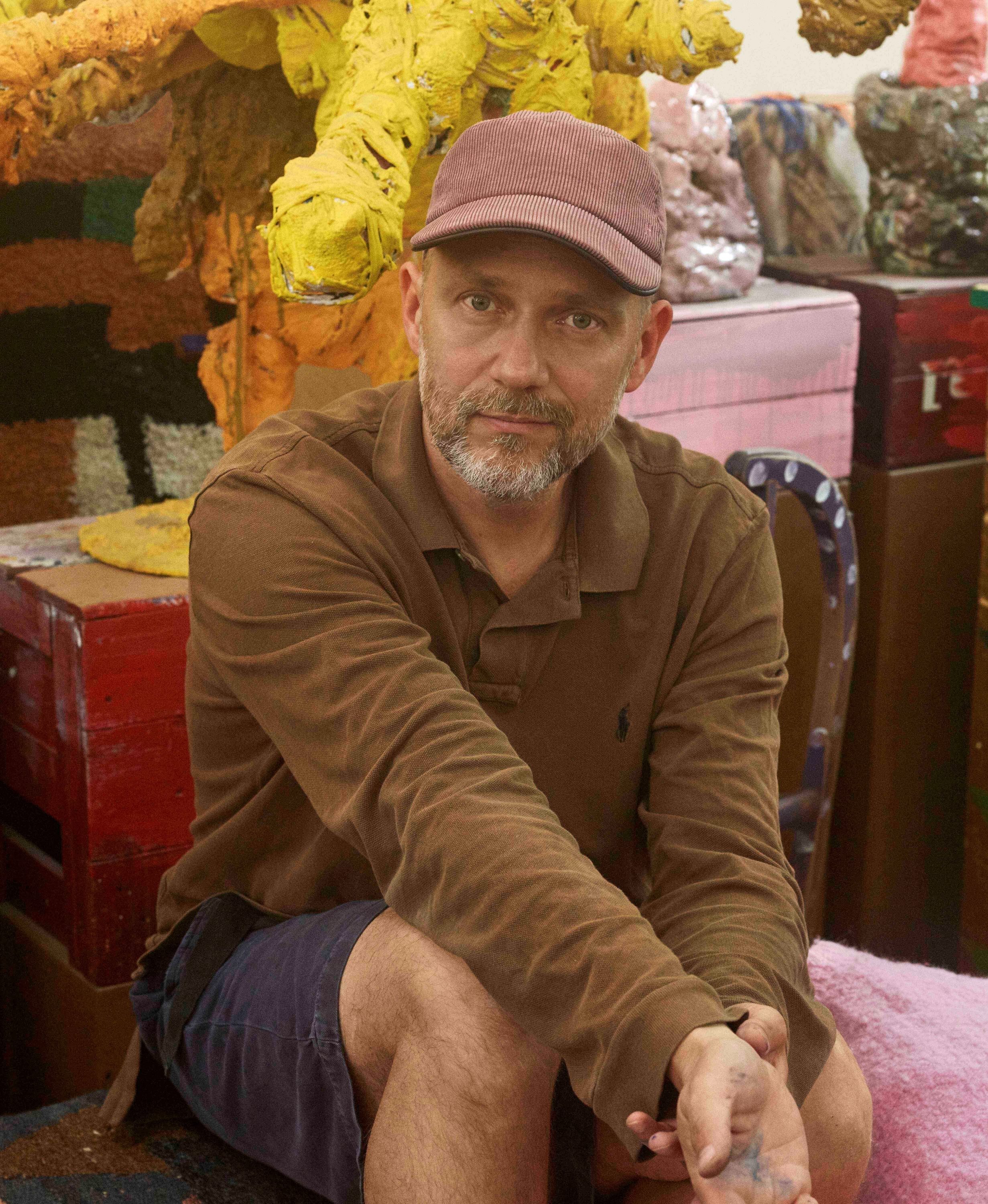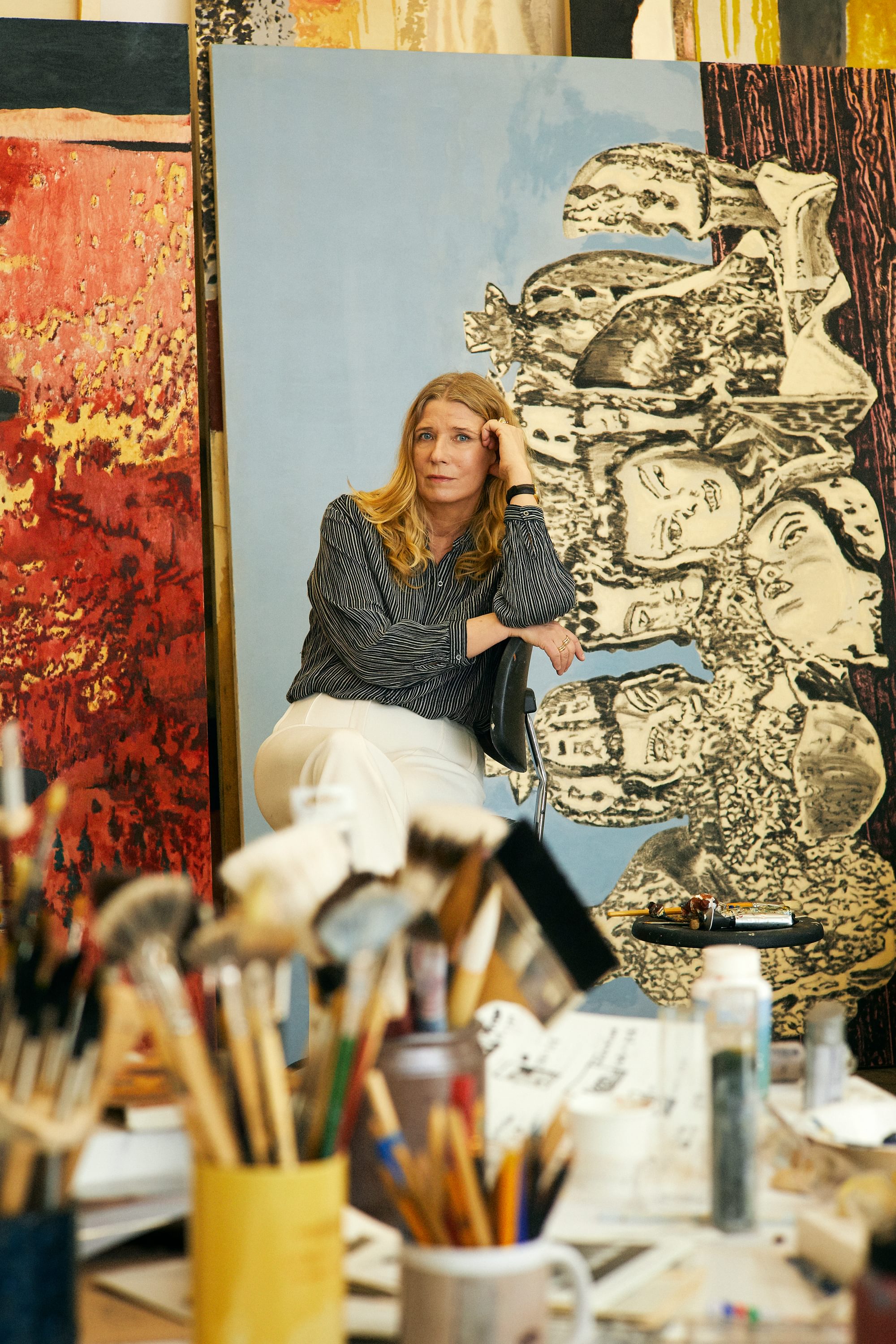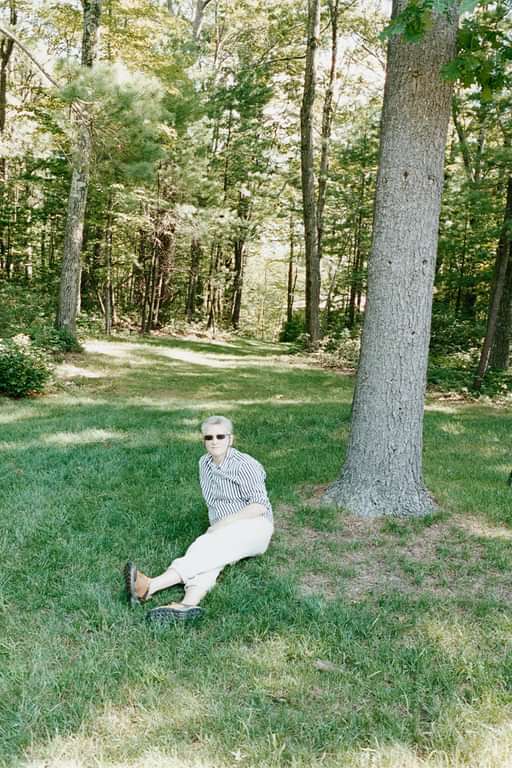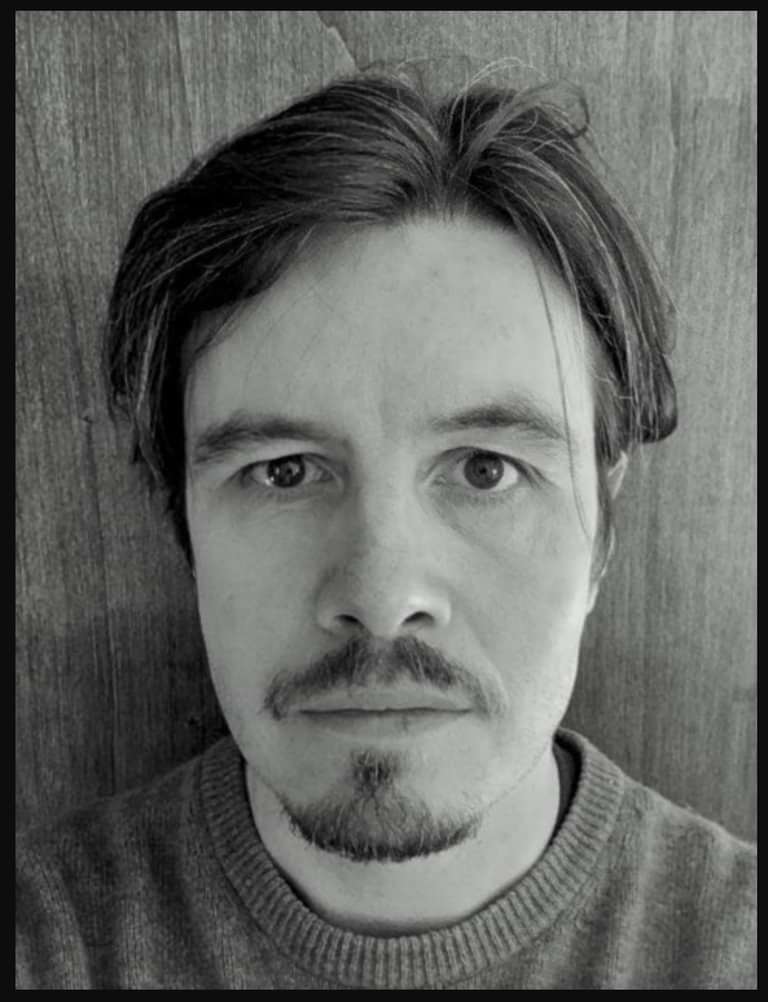A few years ago, after a conference in Reykjavik, I visited the Blue Lagoon in the company of several critics and curators and the British artist Emily Wardill. On arriving we found the geothermal springs full of happy bathers, but an attendant told us we were too late; nobody could now go in, come back tomorrow. While we argued and pleaded – it had been a fairly long drive – Wardill snuck round the guard’s back, disrobed and jumped in the lagoon, merging with the crowd and grinning triumphantly at us until we were sent packing. Something in this anecdote addresses, I think, the aslant, carpe diem-ish, positively opportunistic ways in which artists meet the world. Romantic clichés aside, in my experience – many years of interviewing art-makers and hanging out with them off the clock – how they conduct themselves can be as instructive and involving as their art.
Take exhibition-viewing etiquette, for example. I have a press pass, which entitles me to enter museums free, but artists have something else: membership of a confraternity of makers, which often means they don’t look at art the way non-artists do, and to an extent you can add their ways of looking to your own. Perhaps unsurprisingly, after working at the same coalface, artists skew towards being less respectful of reputations, not arriving at art on their knees but seeing it as something to be prodded and tested and, with historical art, even looted, as compensation for the pressure that the existence of artistic greatness exerts on living creators. A dead painter is, in this respect, just another painter who struggled through trying days at the easel (and now doesn’t have to, lucky them). Also, just because Artist X has a towering reputation doesn’t mean, as the dauber you’re with will point out, that they were any good at drawing feet.
The artist noticed the feet because they tend not to look at, or for, the same things non-artists do; it’s a different order of attention. The painter Michael Armitage told me recently that a formative experience for him was going round an El Greco show at London’s National Gallery – by the end, he hadn’t read a single label and it hadn’t even registered, he said, that they were religious paintings. Armitage had been arrested by the minutiae of the master’s brushwork. Other artists will spot, in seconds, a flaw in an artwork’s fabrication, and point it out while wincing – and maybe while physically poking at said goof, because again, it’s just art, so what. Naming no names, I once traversed a museum retrospective of Gauguin with a painter who unwrapped and ate tangerines as we went, occasionally unconcernedly dropping peels, and jabbed a finger at salient details in works so closely that the alarms repeatedly went off. Confronted with a freestanding art object, artists will automatically do what Darren Almond describes as ‘the sculptor’s dance’ around it, letting it address the body while the eyes address its hidden sides; civilians, in my experience, don’t always know that you have to circumnavigate a sculpture to take it in, not just stare at it from one angle.

Tal R (b. 1967 in Tel Aviv) lives and works in Copenhagen and has become one of the leading international contemporary artists. With coarse brush strokes from a relatively modest color palette, Tal R has a characteristic expressive way of painting. His work is represented multiple public collections, including Louisiana Museum of Modern Art (DK); Museum Kunstpalast (DE), Moderna Museet, Stockholm (SE) and Kiasma (FI). Tal R is represented by Galleri Bo Bjerggaard.
Tal R in Studio Paradise. Photo by Casper Sejersen
"There’s a lesson there. You compete with the best, even though they don’t know you exist, and you’re spurred to greater heights."
If, for artists, art history is a living thing, that’s a double-edged sword. Greatness is what you’re in competition with, but for all that this might appear a Sisyphean task, being in competition is vitalising; it is an engine of making work. There’s a lesson there. You compete with the best, even though they don’t know you exist, and you’re spurred to greater heights. This is a motivating force, and since artists are the ultimate self-starters, they know a thing or two about getting things done. There’s an old story about a New York gallerist who, when they took an artist on, immediately encouraged them to buy property – that way they’d be in debt, and be keen to work. I’ve known a couple of artists follow this strategy on their own. Comfort, relatedly, is not a priority for artists, as you discover the first time you visit a typical barely-heated studio building. (That said, the writer Glenn O’Brien once noted that artists always have some nice cheese and wine around, and this is fairly accurate.) Nor, I’ve learned, is money usually very important to them, except as a means to some end. Semi-masochistically, artists like productive difficulty, getting into trouble in order to get out of it. A couple of years ago, when I was writing a book on Tal R, I visited him in his Copenhagen studio: we were there to talk about painting, but what he was excited to show me were some sculptures he’d been working on, figurative ones. It had taken him ten or fifteen years, he said, to work out how to do a figurative sculpture. Anyone could, you might say; but Tal had to satisfy his own internal requirements (newness, self-surprise) and eventually he worked out that he had to make a sculpture behave like a drawing, everything on a single plane. Having struggled to get to this point, having solved a problem that didn’t need to exist, he was visibly jubilant.
In an interview a few years back, Mamma Andersson noted that sometimes an artist will feel like they’ve made a huge leap, but when someone else sees the work they only notice a tiny change. This kind of perceptual gap can distort the reading of an artist’s progress, and sometimes make them look like they’re churning out work to order; it’s a reminder to attend to nuance in art. But the other reason why the production-line analogy is frequently untrue is that artists are some of the most innately optimistic, inwardly driven people you’re likely to encounter, even if it doesn’t show when they’re complaining about their galleries. Arguably they have to be – for most artists, living off your work is extremely hard, and maintaining creativity over decades is a challenge in itself – but it may just come naturally, or it may even be a product of being frequently in what psychologist Mihaly Csikszentmihalyi has famously called ‘flow’, or ‘optimum experience’. (If they haven’t already, someone should do a long-term study of how being a professional artist alters the structure of the brain.) The simple takeaway from this is ‘find your bliss’, except that you also have to be able to tenaciously reinvent your bliss, keep the muse alive like a Tamagotchi.
"Becoming comfortable with uncertainty is perhaps the largest life lesson I’ve taken from artists"

Mamma Andersson (b. 1962, SE) lives and works in Stockholm and is one of the Nordics most well-established contemporary artists. Inspired by filmic imagery, theatre sets, and domestic interiors, Mamma Andersson‘s compositions are often dreamlike and expressive. Her work is represented in multiple museum collections, including MOCA - The Museum of Contemporary Art, Los Angeles (US), MoMA - Museum of Modern Art (US), Baltimore Museum of Art (US), and Moderna Museet (SE). Mamma Andersson is represented by Galleri Magnus Karlsson.
Photo by Mats Liliequist

Roni Horn (b. 1955, NY) lives and works in New York and Reykjavík and is celebrated for her wide-ranging body of work in which she explores mutability — of identity and gender, language, meaning, and more. She has had major exhibitions at Tate Modern (UK), and Whitney Museum of American Art (US), and her works are in public collections such as MoMA - Museum of Modern Art (US), Solomon R. Guggenheim Museum (US), and Kunstmuseum Basel (CH). Roni Horn is represented by i8 Gallery.
Roni Horn No.3, New York, 2011. Photo by Juergen Teller
There may be a tautology in the theme of this text, in what undergirds its name-dropping: if for professional reasons you spend more time with artists than with other types of people, it stands to reason that you’re going to absorb more life lessons from artists than otherwise. But still, the force of some personalities ameliorates your own in ways deserving of note. When I’m on the verge of losing patience with someone, I try to remember interviewing Roni Horn, an artist who projects such calm, generous and sympathetic intelligence towards an interlocutor – even one who’d scribbled his questions on the way there – that I came away feeling like I’d just done a week’s meditation retreat. Talking to some artists, meanwhile, can be a reminder that there exist rarefied registers of experience in which some people can see in the way that dogs can hear (or smell). I can’t see the particular cyan blue that Carol Bove uses in some of her sculptures as a colour whose main property is that you can’t focus on it – it makes you think, she says, that the original artwork is elsewhere and this one is a copy – but I’m glad she can, and I’m reminded too that vision is subjective and the eye is a muscle of sorts. Hiroshi Sugimoto once said that every time he looked lengthily at a seascape he was ‘powering up his eye’; you’re not stuck with what you have.
To return to Tal R for a moment, the first time I met him he told me about a Knut Hamsun novel, Mysteries, in which all the action was propelled by a seemingly minor character, a dwarf, who was offstage for much of the book’s action, which concerned a figure whose personality shifts from chapter to chapter. This, for Tal, related to artistic doubt: his assertion that doubt was close to the heart of art-making influenced me enough to write a book about it, and becoming comfortable with uncertainty is perhaps the largest life lesson I’ve taken from artists. Artworks are open-ended things, subject to the whims of interpretation, and once they leave the studio and enter the world, the artist can’t control how they’re read; the art career itself is, in various ways, a study in precarity. This voluntary accommodation to the unknowable, cosying up to chance and leveraging your wits, is a useful leavening quality to have in your life; as is the ability to seize the moment and break a few rules when necessary. Almost a decade ago, I happened to be in Vienna for an art fair and, having a free evening, went to see Ed Ruscha and Lawrence Weiner in conversation at the Kunsthistoriches Museum.
Previously, the one thing I’d learned from Weiner is that, by his own account, you could be raised – in wartime New York – on whale meat and Guinness and still survive. That night on the podium, he said, basso profundo, that he’d only agreed to this event if he was given a bottle of Lagavullin whisky. Later, at a party elsewhere in the museum, I spotted the aforesaid hooch on a hospitality table and persuaded a woman I’d just met, the artist Eva Grubinger, that we should steal it and leave. This we did (sorry, Lawrence; I very much owe you) and, long story short, now we’re married. When it comes to changing the lives of others, there’s really no limit to what artists can do.
"Talking to some artists, meanwhile, can be a reminder that there exist rarefied registers of experience in which some people can see in the way that dogs can hear (or smell)."

Lawrence Weiner (b. 1942, NY) is a conceptual artist best known for his text-based installations and radical definitions of art. He has had a major retrospective at the Whitney Museum of American Art, New York (2007) and solo exhibitions Stedelijk Museum, Amsterdam (2013), Museu d’Art Contemporani de Barcelona, Spain (2013), Haus der Kunst, Munich, Germany (2007), Museo Tamayo Arte Contemporaneo, Mexico City (2004), among other international institutions. He has participated several years in documenta and Venice Biennales. Lawrence Weiner is represented by Galleri Susanne Ottesen (DK) and I8 Gallery (IS).
Photo by Kirsten Vibeke Thueson Weiner and courtesy of Moved Pictures Archive, NYC

Martin Herbert is a writer based in Berlin. He is associate editor of ArtReview and contributes regularly to international art journals; his books include 'The Uncertainty Principle' (2014), 'Tell Them I Said No' (2016) and 'Unfold This Moment' (2020). In 2019 he curated the touring exhibition 'Slow Painting'.



